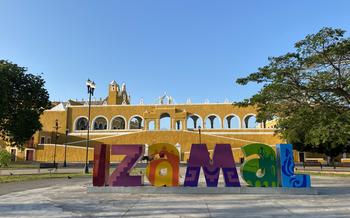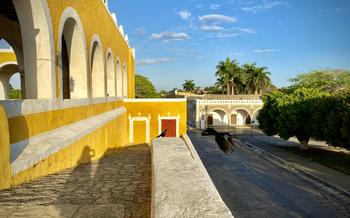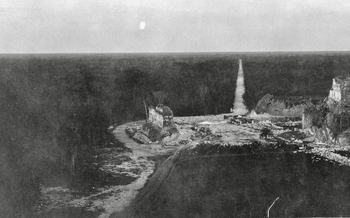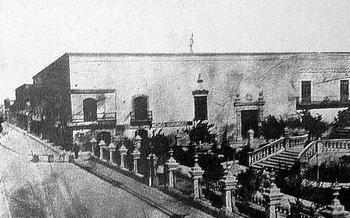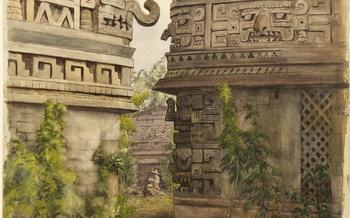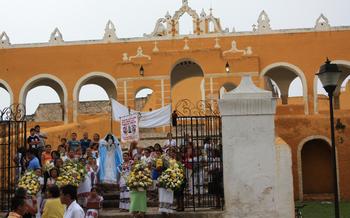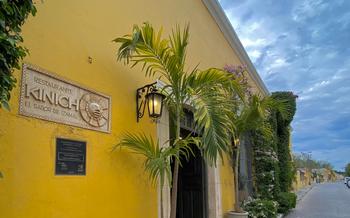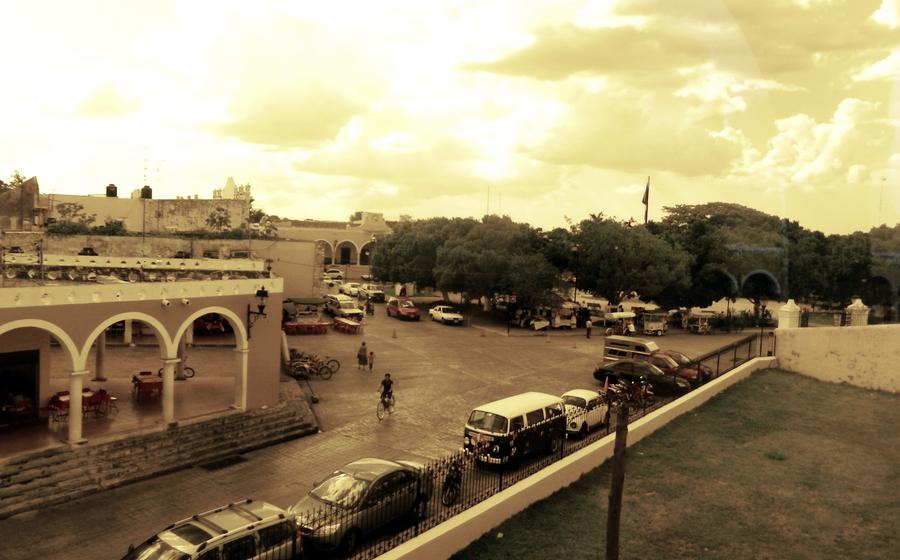
Cenote Dzitnup (Nearby city)
- History of Cenote Dzitnup
- Geological Formation
- Water Quality and Clarity:
- Exploring the Cenote
- Natural Beauty
- Cultural Significance
- Local Traditions and Legends
- Sustainable Tourism
- Photography Tips
- Wildlife and Conservation
- Local Cuisine and Dining
- Nearby Attractions
- Local Festivals and Events
History of Cenote Dzitnup
The Cenote Dzitnup holds a significant place in Mayan history and culture. Mayans revered cenotes as sacred natural wells and believed they were gateways to the underworld, known as Xibalba. The Cenote Dzitnup was particularly revered as a place of worship and pilgrimage. Archaeological excavations have revealed numerous artifacts, including ceramic offerings and jade jewelry, suggesting that the cenote was used for religious ceremonies and rituals. The discovery of human remains further indicates that the cenote may have been used for burials or sacrificial offerings. Legends and myths associated with the Cenote Dzitnup add to its mystique. According to one legend, a beautiful Mayan princess drowned in the cenote after being pursued by an evil sorcerer. Her spirit is said to reside in the cenote, enchanting visitors with her beauty.
Geological Formation
The Cenote Dzitnup, like many other cenotes in the Yucatan Peninsula, is a result of the dissolution of limestone bedrock by groundwater. Over time, the limestone dissolves, creating underground cavities and tunnels. When the roof of a cavity collapses, it creates a cenote.
The Cenote Dzitnup has a unique geological formation that makes it stand out from other cenotes in the region. It is located in a collapsed cave system, which has resulted in a large, open cenote with high walls and a deep pool of water. The cenote is surrounded by lush vegetation, which adds to its natural beauty.
The surrounding rock formations are made of limestone, which is a sedimentary rock formed from the accumulation of calcium carbonate. The limestone is porous, which allows water to seep through and dissolve it. This process of dissolution has created the cenote's unique features, such as its high walls, deep pool, and underground tunnels.
The Cenote Dzitnup is located in a tropical climate, which means that it receives a lot of rainfall. The rainwater seeps through the limestone and collects in the cenote, which is why the water level can fluctuate depending on the season.
The Cenote Dzitnup's unique geological formation has created a beautiful and inviting environment for swimming, diving, and exploring. The cenote's crystal-clear water, high walls, and underground tunnels make it a popular destination for tourists and locals alike.
Water Quality and Clarity:
The Cenote Dzitnup is renowned for its exceptional water quality, boasting crystal-clear visibility that allows visitors to marvel at the intricate underwater world. Several factors contribute to this remarkable clarity. The cenote's location, nestled deep within the jungle, shields it from external pollutants and sediment runoff. Additionally, the water undergoes a natural filtration process as it seeps through the porous limestone bedrock, removing impurities and ensuring its pristine condition.
Preserving the cenote's water quality is of utmost importance. Visitors are encouraged to practice sustainable swimming and diving practices to minimize their impact on the delicate ecosystem. These guidelines include avoiding the use of sunscreen and insect repellent before entering the water, as these chemicals can contaminate the water and harm aquatic life. Additionally, it is essential to refrain from touching or disturbing the cenote's fragile rock formations and stalactites, as these structures are vital for maintaining the cenote's natural beauty and ecological balance.
Exploring the Cenote
Planning a visit to Cenote Dzitnup requires careful consideration to ensure a safe and enjoyable experience. Before venturing into the cenote, allocate ample time to familiarize yourself with the surroundings and safety guidelines. Choose a suitable time of day, ideally early morning or late afternoon, to avoid crowds and relish the tranquility of the cenote.
Navigating the cenote's underground chambers and tunnels involves following designated paths and respecting the fragile environment. Adhere to marked trails and avoid touching or disturbing the rock formations. If exploring the cenote's depths, consider hiring a certified guide who can lead you safely through the intricate passages and provide insights into the cenote's history and significance.
Natural Beauty
The natural beauty of Cenote Dzitnup is simply breathtaking. Lush vegetation surrounds the cenote, creating a picturesque setting. Unique rock formations and stalactites add to the beauty of the cenote, making it a photographer's paradise.
The cenote's crystal-clear waters reflect the surrounding greenery, creating a stunning visual effect. The water is so clear that you can see the bottom of the cenote even when you are swimming in the deepest part.
The cenote is also a great place to watch the sunrise and sunset. The colors of the sky are reflected in the water, creating a magical display of light and color.
Whether you are swimming, diving, or simply relaxing on the shore, you are sure to be amazed by the natural beauty of Cenote Dzitnup.
Cultural Significance
The Cenote Dzitnup held immense cultural significance for the ancient Mayans. It was considered a sacred site, a place of worship and spiritual connection. The Mayans believed that cenotes were portals to the underworld, a realm inhabited by gods and ancestors. They performed religious ceremonies and rituals at the cenote, seeking guidance and blessings from the divine. The cenote also served as a gathering place for the community, where people came together for social and cultural events. It was a source of water, providing sustenance and life to the Mayan people. Even today, the cenote continues to hold cultural importance, as local communities still practice traditional rituals and ceremonies at the site, honoring their ancestral heritage.
Local Traditions and Legends
Cenote Dzitnup is deeply intertwined with local traditions and legends that have been passed down through generations. The Mayan people hold the cenote in high regard, believing it to be a sacred place connected to the underworld. According to Mayan mythology, cenotes were portals to Xibalba, the Mayan realm of the dead.
One popular legend tells the story of a young Mayan princess named Ix Chel who was chosen by the gods to become the guardian of Cenote Dzitnup. Ix Chel was known for her beauty and kindness, and she was beloved by the people. When she passed away, her spirit remained at the cenote, watching over it and protecting its waters.
To this day, local people still perform rituals and ceremonies at the cenote to honor Ix Chel and other Mayan deities. Visitors are welcome to observe these ceremonies, but it is important to be respectful and mindful of local customs and beliefs.
Engaging with the local community is a wonderful way to learn more about the rich cultural heritage of the region. Take the time to talk to the people, listen to their stories, and immerse yourself in the traditions that make this place so special.
Sustainable Tourism
As responsible travelers, it is important to minimize our impact on the delicate ecosystem of Cenote Dzitnup. Here are some guidelines to promote sustainable tourism:
-
Eco-Friendly Transportation: Opt for eco-friendly transportation options such as cycling, walking, or using electric vehicles to reach the cenote. This helps reduce carbon emissions and air pollution.
-
Support Local Businesses: Support the local economy by patronizing local businesses, including tour operators, restaurants, and souvenir shops. This helps create employment opportunities and contributes to the well-being of the community.
-
Reduce Plastic Waste: Minimize your plastic waste by bringing reusable water bottles, containers, and shopping bags. Avoid single-use plastics and dispose of waste responsibly in designated bins.
-
Respect Wildlife: Observe wildlife from a distance and avoid disturbing their natural habitats. Refrain from feeding or touching animals, as this can disrupt their behavior and cause harm.
Photography Tips
Whether you're a seasoned photographer or simply looking to capture the beauty of Cenote Dzitnup through your lens, there are a few tips to keep in mind.
-
Camera Settings: Opt for a wide-angle lens to capture the vastness of the cenote's chambers and the surrounding rock formations. A tripod is recommended for stability, especially for long exposure shots.
-
Natural Light: The best time to visit for photography is during the early morning or late afternoon when the sunlight casts a golden glow on the cenote's waters, creating a magical ambiance.
-
Underwater Photography: If you're a certified diver and have the necessary equipment, consider exploring the cenote's underwater world. Use a waterproof camera or housing to capture the vibrant aquatic life and intricate rock formations beneath the surface.
-
Respect the Environment: Always prioritize the preservation of the cenote's natural beauty. Avoid touching or disturbing the rock formations, and be mindful of your movements to minimize impact on the delicate ecosystem.
-
Share Responsibly: Share your stunning photos while promoting responsible tourism. Tag your location accurately and use hashtags that encourage sustainable practices. Inspire others to appreciate and protect the wonders of Cenote Dzitnup for generations to come.
Wildlife and Conservation
Cenote Dzitnup is home to a diverse array of wildlife, both in the water and on land. The crystal-clear waters are teeming with colorful fish, turtles, and other aquatic creatures, while the surrounding vegetation provides a habitat for birds, reptiles, and mammals. The cenote is also an important nesting site for several species of birds, including the Yucatan jay, the white-fronted parrot, and the vermilion flycatcher.
Preserving the cenote's fragile ecosystem is of utmost importance. The cenote's water quality is particularly vulnerable to pollution, as it is a closed system with no natural outlet. Visitors are encouraged to minimize their environmental impact by avoiding the use of sunscreen and insect repellent in the water, and by disposing of waste properly.
Several conservation initiatives are underway to protect Cenote Dzitnup and its surroundings. The local community has established a conservation area around the cenote, and works to monitor and protect the wildlife and vegetation. Visitors can contribute to conservation efforts by supporting local organizations and participating in conservation activities, such as reforestation projects and wildlife monitoring.
Local Cuisine and Dining
Indulge in the tantalizing flavors of traditional Mayan cuisine near Cenote Dzitnup. Local restaurants and markets offer a delectable array of dishes that showcase the region's rich culinary heritage. Savor the aromatic "cochinita pibil," a slow-roasted pork dish marinated in achiote paste and wrapped in banana leaves. Delight in the simplicity of "panuchos," tortillas topped with refried beans, shredded chicken, and a tangy tomato sauce. Don't miss the opportunity to try "salbutes," crispy tortillas adorned with lettuce, tomatoes, and turkey or chicken.
Explore the vibrant local markets to discover a treasure trove of fresh fruits, vegetables, and spices. Engage with friendly vendors and learn about the traditional ingredients used in Mayan cooking. Treat your palate to freshly squeezed fruit juices, refreshing "aguas frescas," and thirst-quenching "horchata," a creamy rice-based beverage.
By supporting local businesses and sampling the culinary delights of the region, you'll not only satisfy your taste buds but also contribute to the preservation of Mayan cultural traditions. Immerse yourself in the vibrant culinary scene and let the flavors of Izamal dance on your palate.
Nearby Attractions
After immersing yourself in the refreshing waters of Cenote Dzitnup, take some time to explore the surrounding area, which is brimming with captivating attractions. Just a short distance away, you'll find the ancient Mayan city of Chichén Itzá, a UNESCO World Heritage Site that boasts awe-inspiring pyramids, temples, and ball courts. Walk through the ruins and marvel at the architectural prowess of the ancient Maya civilization.
For a unique glimpse into local life, visit the nearby village of Izamal, known as the "Yellow City" due to its vibrant yellow-painted buildings. Wander through its charming streets, admire the colonial architecture, and interact with the friendly locals. Indulge in delicious regional cuisine at local restaurants or shop for handcrafted souvenirs at the bustling markets.
If you're an avid birdwatcher, head to the nearby Celestún Biosphere Reserve, a haven for over 200 species of birds, including the majestic pink flamingos. Take a boat tour through the mangroves, spot diverse wildlife, and soak in the breathtaking natural beauty of this protected area.
Enhance your trip by exploring the colonial city of Valladolid, with its colorful buildings, charming plazas, and fascinating museums. Visit the Convent of San Bernardino de Siena, marvel at the impressive murals in the Church of San Servacio, and climb to the top of the lookout tower for panoramic city views.
Create an unforgettable itinerary that combines the natural wonders of Cenote Dzitnup with the rich cultural and historical offerings of the surrounding region. Immerse yourself in the diverse attractions, engage with the local communities, and discover the hidden gems that make this part of Mexico a truly captivating destination.
Local Festivals and Events
The region surrounding Cenote Dzitnup is rich in cultural traditions and vibrant festivals. One of the most notable events is the annual Fiesta de San Antonio, held on June 13th. This festival honors the patron saint of the town, San Antonio de Padua. The celebration is marked by colorful processions, traditional dances, live music, and a lively fair.
If you happen to visit during this time, don't miss the chance to immerse yourself in the festive atmosphere. Join the locals as they dance to the rhythm of traditional music, savor delicious local cuisine, and witness the vibrant cultural performances. It's a wonderful opportunity to experience the rich heritage and traditions of the region firsthand.
Plan your visit to coincide with this joyous celebration and discover the warmth and hospitality of the local community.

